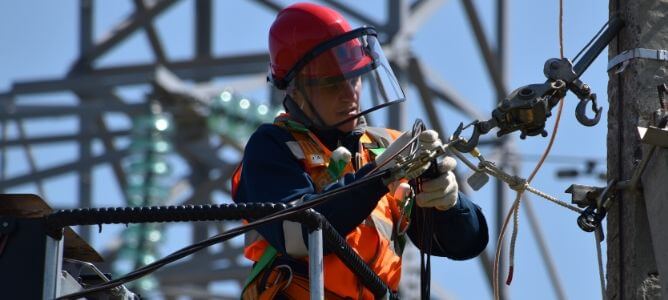Choosing a career in early years education means shaping the futures of young minds during their most formative years. It’s a path that demands patience, creativity, and a genuine passion for nurturing development. But how do you gain the skills and experience needed to excel in such a vital role? That’s where early years apprenticeships with hands-on learning come in.
These apprenticeships offer a unique blend of practical experience and structured training, allowing you to build confidence while working directly with children. Unlike traditional classroom-based qualifications, this approach immerses you in real-life scenarios from day one, helping you develop the expertise and adaptability required to thrive in this rewarding field. Whether you’re starting fresh or looking to upskill, this route could be your perfect step into a fulfilling career.
Understanding Early Years Apprenticeships
Early years apprenticeships offer a blend of study and practical training focused on working with children from birth to age five. These programmes let you earn qualifications while gaining first-hand experience in early education environments. By combining classroom learning with practical tasks, you’re likely to develop both theory and applied skills seamlessly.
When you participate, you’ll work directly with children, helping foster their development through structured activities, play, and care. Alongside this, you’ll study key topics like child development, safeguarding, and communication, ensuring a rounded understanding of your role and its responsibilities.
The apprenticeship levels vary, aligning with different experience and qualification needs. At Level 2, an Early Years Practitioner role introduces you to foundational skills. Level 3 apprenticeships lead to an Early Years Educator qualification, enabling you to take on greater responsibility. For advanced learning and leadership skills, higher levels, such as Level 5, may also be available.
Your daily role might include preparing learning materials, observing children’s progress, supporting sensory activities or maintaining a safe and engaging environment. Tasks like assisting with mealtimes or managing behaviour provide insight into the practical aspects of a childcare career.
Who supports you during this journey? Employers partner with training providers to guide and mentor you. Training includes assessment of your workplace performance, ensuring you meet nationally recognised criteria. You gain vital feedback that helps refine your approach, whether that’s how you manage classroom interactions or communicate with parents.
While the focus is child-centred, an apprenticeship also enhances your professional skills. Problem-solving, teamwork, and resilience naturally grow as part of your experience. These transferable skills benefit not only this sector but many others.
Are there specific entry requirements? For most Level 2 apprenticeships, GCSEs in English and Maths are preferred, though some options offer support to achieve this alongside practical training. Level 3 roles expect prior experience or qualifications at Level 2. It’s an inclusive pathway, open to many backgrounds.
What draws people into early years apprenticeships? You gain a secure footing in a thriving field, combining your care for children with career development. By the time you qualify, you’re equipped with both knowledge and applied experience that employers value significantly.
Benefits Of Hands-On Learning
Hands-on learning connects practical experience with meaningful understanding. Through early years apprenticeships, this approach immerses you directly in a child’s world, fostering both skill and confidence.
Building Practical Skills
Direct interaction in early education settings builds essential skills. You might find yourself creating lesson plans, engaging in problem-solving during activities, or developing strategies for behavioural management. These real-world tasks strengthen your ability to adapt to situations as they arise. Watching how children respond to learning materials or engaging in play-based teaching refines your techniques. Practical skills grow naturally when you’re in the heart of dynamic early years environments, integrating theoretical knowledge into actual practice.
Enhancing Confidence And Independence
Working closely with children sharpens your independence. You gain confidence by handling challenges like resolving conflicts, meeting diverse needs, and supporting developmental milestones. The sense of achievement from successfully figuring responsibilities, like guiding group activities or maintaining a safe space, empowers your decision-making. Having this hands-on role teaches you to take initiative while remaining attentive to individual needs, further enhancing both your autonomy and self-assurance.
Key Components Of An Effective Apprenticeship
An apprenticeship in the early years sector is more than just learning on the job. It combines core elements that ensure you gain the skills and knowledge needed for success.
Structured Training Programs
Your apprenticeship combines practical involvement with structured study sessions. These programmes often focus on a blend of key subjects like early childhood development, safeguarding, and inclusive education. You attend workshops, complete assignments, and participate in assessments, all designed to complement your hands-on learning. Theoretical understanding strengthens your practical application, enabling you to approach tasks with confidence. Training often aligns with workplace activities, so you might learn about developmental milestones and then apply that knowledge by observing children or designing activities tailored to their needs.
Professional Mentorship
Apprenticeships place you alongside mentors with years of expertise in early years education. These professionals guide you, share advice, and model best practices through everyday interactions. Mentors provide feedback that encourages reflection and continuous improvement. They might help you refine techniques in areas like behaviour management or adapting activities for diverse abilities. Through these relationships, you develop a deeper understanding of the role. A mentor doesn’t just oversee your progress; they support your growth, challenge you to step outside your comfort zone, and celebrate your achievements. It’s a relationship built around learning and trust.
Challenges In Early Years Apprenticeships
Figuring early years apprenticeships can be both rewarding and demanding, testing your adaptability as you balance responsibilities. While these challenges shape your personal and professional growth, they also require resilience and resourcefulness.
Balancing Work And Study
Managing the dual demands of work-based learning and academic study stretches your organisational skills. You might spend mornings supporting children’s play activities and afternoons completing coursework deadlines. Time management becomes critical when your day involves observing developmental milestones while planning lessons for tomorrow.
Support networks like mentors or training providers often help, but the pressure of performing well in both areas can feel daunting. By setting priorities carefully, you reduce the risk of burnout without compromising your effectiveness as a learner or educator.
Access To Quality Resources
Access to effective learning materials can determine your progress. Training providers may offer limited resources, meaning you could supplement your study using external platforms or community libraries.
Resource disparity between workplaces also impacts your apprenticeship experience. While some early years settings are rich in age-appropriate toys and developmental tools, others might rely on budget-friendly alternatives. Proactively seeking adaptable strategies ensures you still deliver engaging activities that benefit the children in your care.
In Closing
Early years apprenticeships offer a unique opportunity to develop practical skills while making a meaningful impact on young lives. By immersing yourself in real-world settings, you gain the confidence and expertise needed to nurture children’s growth and development effectively.
This hands-on approach, paired with structured training and mentorship, equips you with the tools to thrive in a rewarding and dynamic field. With dedication and resilience, you’ll be well-prepared to embrace the challenges and joys of shaping the next generation.










